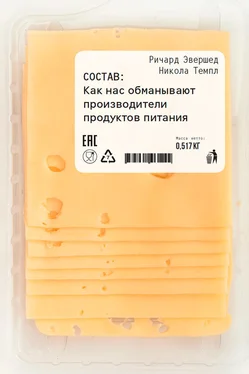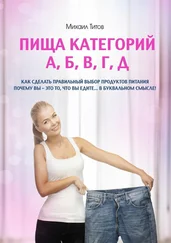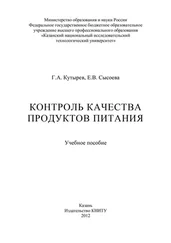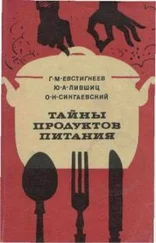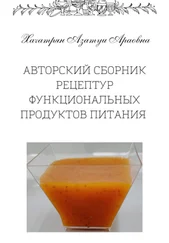
Речь идет о скандале, который случился после обнаружения во многих странах Европы конины в говяжьих продуктах. – Здесь и далее прим. ред.
Примерно 160 км.
Документальный фильм «На конце удочки» (The End of The Line, 2009) британского режиссера Руперта Мюррея снят по книге журналиста, корреспондента газеты Financial Times Чарльза Кловера «На конце удочки. Как чрезмерный отлов рыбы изменяет мир и что мы едим?» (The End of the Line: How Overfishing Is Changing the World and What We Eat, 2004). Дэниел Поли – морской биолог, профессор Университета Британской Колумбии (Канада).
Автор книги – Бенджамин Уоллес (Benjamin Wallace).
Знак «обратный (перевернутый) эпсилон» размещается на боку бутылки рядом с дном и удостоверяет, что бутылка соответствует европейским стандартам по объему.
Сладкие фрукты (англ.).
Riverford Organics – британская семейная ферма в местечке Бакфастли (графство Девон) и торговая сеть по продаже фермерских продуктов. Основатель бизнеса – Гай Уотсон (Guy Watson). Предприятие специализируется на поставках органических продуктов по заказу, конкурируя с супермаркетами за счет качества продукции и относительно невысоких цен.
Food and Drug Administration. 2009. Economically Motivated Adulteration. Public Meeting; Request for Comment (Docket No. FDA-2009-N-0166) (Electronic Version). Federal Register, 74, 15497–9; http://edocket.access.gpo.gov/2009/pdf/E9-7843.pdf.
Lewis, J. Lead Poisoning: A Historical Perspective. United States Environmental Protection Agency (EPA Journal, May 1985); http://www2.epa.gov/aboutepa/lead-poisoning-historical-perspective.
Цит. по кн.: Wilson, B. 2008. Swindled. Princeton University Press, New Jersey, p. 163.
Ropicki, A., Larkin, S. & Adams, C. 2010. Seafood substitution and mislabeling: WTP for a locally-caught grouper labeling program in Florida. Marine Resource Economics 25: 77–92.
National Audit Office (10 Oct 2013). Food safety and authenticity in the processed meat supply chain . The Food Standards Agency, Department for Environment, Food & Rural Affairs, Department of Health, HC 685, Session 2013–2014: 10.
¹ Ng, C. M. & Reuter, W. M. 2015. Application Note: Analysis of sugars in honey using the PerkinElmer Altus HPLC system with RI detection; http://www.perkinelmer.co.uk/CMSResources/Images/44-171789APP_Analysis-of-Sugars-in-Honey-012101_01.pdf.
Di Girolamo, F., D'Amato, A. & Righetti, P. G. 2012. Assessment of the floral origin of honey via proteomic tools. Journal of Proteomics 75(12): 3688–93.
Schievano, E., Stocchero, M., Morelato, E., Facchin, C. & Mammi, S. 2012. An NMR-based metabolomic approach to identify the botanical origin of honey. Metabolomics 8(4): 679–90.
Ohmenhaeuser, M., Monakhova, Y. B., Kuballa, T. & Lachenmeier, D. W. 2013. Qualitative and quantitative control of honeys using NMR spectroscopy and chemometrics. ISRN Analytical Chemistry 2013: 825318.
Beitlich, N., Koelling-Speer, I., Oelschlaegel, S. & Speer, K. 2014. Differentiation of manuka honey from kanuka honey and from jelly bush honey using HS-SPME-GC/MS and UHPLC-PDA-MS/MS. Journal of Agricultural and Food Chemistry 62: 6435–44.
Schnell, I. B., Fraser, M., Willerslev, E. & Gilbert, M. T. P. 2010. Characterisation of insect and plant origins using DNA extracted from small volumes of bee honey. Arthropod-Plant Interactions 4: 107–16.
Bruni, I., Galimberti, A., Caridi, L., Scaccabarozzi, D., De Mattia, F., Casiraghi, M. & Labra, M. 2015. A DNA barcoding approach to identify plant species in multiflower honey. Food Chemistry 170: 308–15.
Schellenberg, A., Chmielus, S., Schlicht, C., Camin, F., Perini, M., Bontempo, L., Heinrich, K., Kelly, S. D., Rossmann, A., Thomas, F., Jamin, E. & Horacek, M. 2010. Multielement stable isotope ratios (H, C, N, S) of honey from different European regions. Food Chemistry 121(3): 770–77.
http://www.mcdonalds.com/us/en/your_questions/our_food/does-your-food-contain-dimethylpolysiloxane.html.
Gelpí, E., Posada de la Paz, M., Terracini, B., Abaitua, I., Gómez de la Cámara, A. G., Kilbourne, E. M., Lahoz, C., Nemery, B., Philen, R. M., Soldevilla, L. & Tarkowski, S. (WHO/CISAT Scientific Committee for theToxic Oil Syndrome). 2002. The Spanish toxic oil syndrome 20 years after its onset: A multidisciplinary review of scientific knowledge. Environmental Health Perspectives 110(5): 457–64.
Posada de la Paz, M., Philen, R. M. & Abaitua Borda, I. 2001. Toxic oil syndrome: The perspective after 20 years. Epidemiologic Reviews 23(2): 231–46.
Woodbury, S. E., Evershed, R. P., Rossell, J. B., Griffiths, R. E. & Farnell, P. 1995. Detection of vegetable oil adulteration using gas chromatography combustion/isotope ratio mass spectrometry. Analytical Chemistry 67: 2685–90.
Woodbury, S. E., Evershed, R. P. & Rossell, J. B. 1998. Purity assessments of major vegetable oils based on δ13C values of individual fatty acids. Journal of the American Oil Chemists Society 75(3): 371–9.
Mottram, H. R., Woodbury, S. E., Rossell, J. B. & Evershed, R. P. 2003. High-resolution detection of adulteration of maize oil using multi-component compound-specific δ13C values of major and minor components and discriminant analysis. Rapid Communication in Mass Spectrometry 17: 706–12.
Frankel, E. N., Mailer, R. J., Wang, S. C., Shoemaker, C. F., Guinard, J.-X., Flynn, J. D. & Sturzenberger, N. D. 2011. Report: Evaluation of Extra-Virgin Olive Oil Sold in California . UC Davis Olive Centre; http://olivecenter.ucdavis.edu/research/ files/report041211finalreduced.pdf.
European Commission, Research & Innovation, Funding Opportunities. Call: H2020-SFS-2014-2; http://ec.europa.eu/research/participants/portal/desktop/en/opportunities/h2020/topics/sfs-14a-2014.html[см. также: http://cordis.europa.eu/project/rcn/204671_en.html. – Ред.].
Читать дальше
Конец ознакомительного отрывка
Купить книгу
